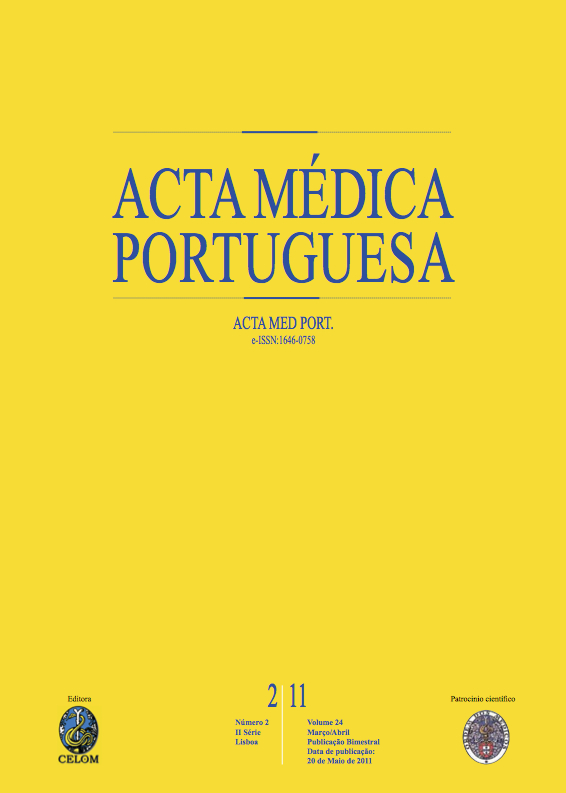Alopécia areata: análise retrospectiva da consulta de dermatologia pediátrica (2000-2008).
DOI:
https://doi.org/10.20344/amp.1630Resumo
Alopecia areata usually presents as patchy, nonscarring hair loss. It seems to be an immune mediated disease, whereas genetic predisposition, environmental and psychological triggers may be involved in its aetiology.To study the epidemiology, clinical aspects, associations, and treatment of alopecia areata in the paediatric population of Peadiatric Dermatology outpatients over a 9-year period. Some psychologic characteristics were also assessed.Descriptive and retrospective study of all newly diagnosed AA cases seen from January 2000 to December 2008 at the Hospital de São Marcos' Paediatric Dermatology Department. Fifteen patients with AA were interviewed for psycologic evaluation.Forty-eight cases (54% male/46% female) were identified. Mean age at presentation was 7.8 years. Family history of AA was reported in 10% of the cases, and in 25% there was a personal and/or family history of atopy. The majority of patients (82%) had mild disease and topical corticotherapy was the first-line treatment for limited AA. Fifty-four percent of these patients had a complete resolution of the lesions with treatment. Systemic treatment (corticosteroids and/or ciclosporin) was used in 71% of patients with extensive disease (more than 50% hair loss). Only one of these patients had a sustained clinical improvement after treatment. Twelve out of 15 respondents (80%) recalled stressful events preceding hair loss.Our findings are similar to those reported in other studies. Epidemiologic studies of AA are available in adulthood but there is a paucity of literature on children with AA. A holistic approach is important in the management of childhood AA as the disease can have a severe psychologic impact on an individual's well-being.Downloads
Downloads
Como Citar
Edição
Secção
Licença
Todos os artigos publicados na AMP são de acesso aberto e cumprem os requisitos das agências de financiamento ou instituições académicas. Relativamente à utilização por terceiros a AMP rege-se pelos termos da licença Creative Commons ‘Atribuição – Uso Não-Comercial – (CC-BY-NC)’.
É da responsabilidade do autor obter permissão para reproduzir figuras, tabelas, etc., de outras publicações. Após a aceitação de um artigo, os autores serão convidados a preencher uma “Declaração de Responsabilidade Autoral e Partilha de Direitos de Autor “(http://www.actamedicaportuguesa.com/info/AMP-NormasPublicacao.pdf) e a “Declaração de Potenciais Conflitos de Interesse” (http://www.icmje.org/conflicts-of-interest) do ICMJE. Será enviado um e-mail ao autor correspondente, confirmando a receção do manuscrito.
Após a publicação, os autores ficam autorizados a disponibilizar os seus artigos em repositórios das suas instituições de origem, desde que mencionem sempre onde foram publicados e de acordo com a licença Creative Commons









